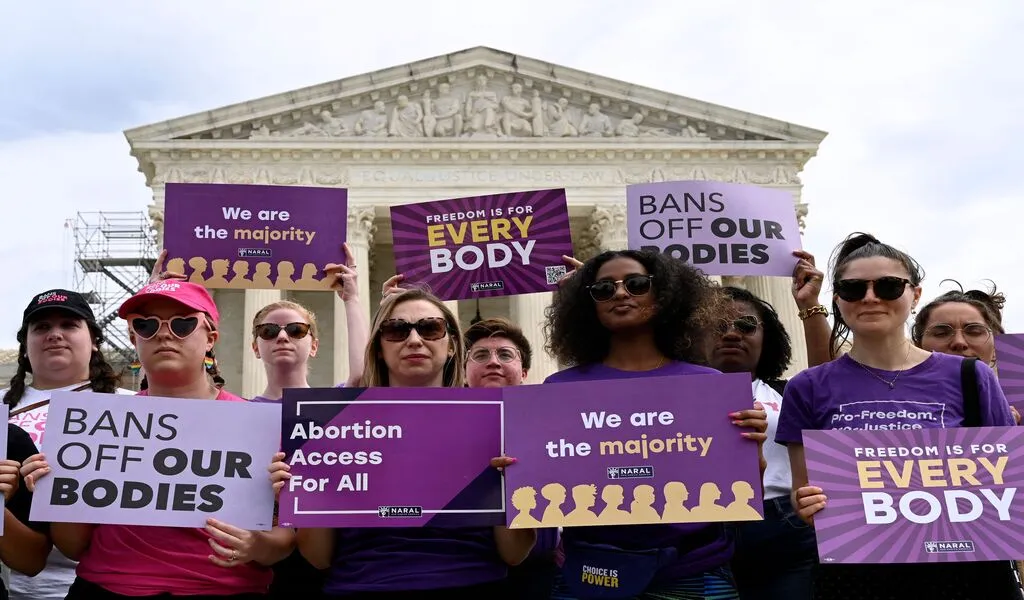Health
Where Abortion Laws Stand in Every State: A Year After Supreme Court Overturned Roe

(CTN News) – Abortion has been a controversial topic in the United States for decades. The landmark Supreme Court decision in Roe v. Wade in 1973 established the constitutional right to abortion, but the landscape has shifted in recent years.
In this article, we will explore the current state of abortion laws across the country, particularly focusing on the changes that have occurred one year after the Supreme Court overturned Roe v. Wade.
1. Background: Roe v. Wade and its Impact
In 1973, the Supreme Court’s decision in Roe v. Wade established a woman’s constitutional right to abortion. This landmark ruling allowed women to access safe and legal abortions nationwide. It was a significant victory for women’s reproductive rights and sparked heated debates between pro-choice and pro-life advocates.
2. The Supreme Court’s Decision to Overturn Roe v. Wade
One year ago, the Supreme Court made a historic decision to overturn Roe v. Wade, allowing states to regulate and restrict abortion within their jurisdictions. This decision marked a pivotal moment in the ongoing debate surrounding abortion rights and has led to significant changes in state-level legislation.
3. States with Strict Abortion Laws
Since the Supreme Court’s decision, some states have taken a more conservative approach and enacted strict abortion laws. These laws often include mandatory waiting periods, parental consent requirements, and limitations on the gestational age at which an abortion can be performed.
3.1 State A
State A has implemented one of the most restrictive abortion laws in the country. It has banned abortions in almost all circumstances except when the mother’s life is at risk. This law has faced legal challenges, with pro-choice advocates arguing that it violates women’s constitutional rights.
3.2 State B
In State B, lawmakers have passed legislation that bans abortions after a fetal heartbeat is detected. This effectively limits access to abortions as many pregnancies are not detected until after the heartbeat can be heard. The law has faced support and opposition from various groups within the state.
4. States with Moderate Abortion Laws
While some states have embraced stricter abortion regulations, others have opted for more moderate laws that balance the interests of both pro-choice and pro-life advocates.
4.1 State C
State C has implemented a law that allows abortions up to a certain gestational age, typically around 20 weeks. Beyond this point, abortions are only permitted if the mother’s life is at risk or in cases of severe fetal abnormalities. This law aims to strike a balance between reproductive rights and fetal protection.
4.2 State D
In State D, abortion is legal throughout pregnancy but with certain restrictions. The state requires counseling and a waiting period before the procedure can be performed.
Additionally, parental consent or notification may be required for minors seeking an abortion. These regulations aim to ensure informed decision-making while still upholding the right to choose.
5. States with Permissive Abortion Laws
On the other end of the spectrum, some states have maintained permissive abortion laws, providing broader access to reproductive healthcare services.
5.1 State E
State E has upheld the constitutional right to abortion by allowing unrestricted access to the procedure. It has taken measures to protect and expand reproductive rights, including funding clinics providing comprehensive reproductive healthcare services. This approach has been praised by pro-choice advocates but faced criticism from opponents.
5.2 State F
Similarly, State F has maintained a permissive stance on abortion, ensuring women can access safe and legal options. It has implemented policies that prioritize reproductive healthcare and contraceptive services, aiming to reduce unintended pregnancies and support women’s reproductive autonomy.
6. The Impact on Women’s Access to Reproductive Healthcare
The changes in abortion laws across states have significantly impacted women’s access to reproductive healthcare. Women may face significant barriers in states with strict laws, including traveling long distances or crossing state lines to obtain an abortion. These restrictions disproportionately affect low-income individuals and those living in rural areas, further exacerbating disparities in healthcare access.
Conversely, states with permissive abortion laws have ensured that women can access the care they need within their communities. This helps reduce the financial and logistical burdens of seeking reproductive healthcare services.
7. Challenges and Legal Battles
After the Supreme Court’s decision, there have been numerous legal battles surrounding state-level abortion laws. Pro-choice organizations and activists have challenged restrictive legislation, arguing that it infringes upon women’s constitutional rights.
These legal battles continue to shape the landscape of abortion laws, with courts playing a crucial role in determining the constitutionality of these regulations.
8. Public Opinion and Abortion Rights
Abortion remains a highly divisive issue, with public opinion varying nationwide. While some individuals believe in the right to choose and advocate for comprehensive reproductive healthcare, others hold strong pro-life beliefs and support tighter restrictions on abortion. The diversity of opinions reflects the ongoing societal debate and highlights the issue’s complexity.
9. The Role of Activism and Advocacy
In the face of changing abortion laws, activism and advocacy have played a vital role in defending and promoting reproductive rights. Pro-choice organizations, grassroots movements, and individuals have mobilized to protect access to safe and legal abortion services. They engage in awareness campaigns, lobbying efforts, and legal challenges to safeguard women’s reproductive autonomy.
10. Conclusion
The landscape of abortion laws in the United States shifted significantly one year after the Supreme Court overturned Roe v. Wade. States have taken divergent approaches, with some enacting strict regulations and others preserving and expanding reproductive rights. These changes have had profound implications for women’s access to reproductive healthcare and have sparked ongoing legal battles and societal debates.




























